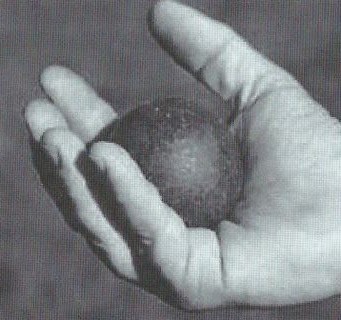Bullet Throwing in Navan
Bullet Throwing in Navan
by Noel French
______________________________________
Bullets or bowling is a game which now survives in South Armagh and West Cork, but it was a game which was played in Meath in the nineteenth and early twentieth centuries. Bullets were formerly played in about half the counties in Ireland including Mayo, Clare, Limerick, Waterford and Louth. The sport was introduced to England by Corkmen working for the Ford works in Dagenham. In recent years the sport has been introduced to North America where there are significant numbers of followers in Boston and Virginia. Since 1954 it has been organised in Ireland under a national controlling body, Bol Chumann na hÉireann. The All-Ireland championships happen every August between the bowlers of Cork and Armagh.
In the Irish Folklore Schools Collection from the 1930s a student at St. Columban’s Abbey N.S., Navan, recorded memories of bullet throwing in the Navan area. Pilib Mac Nichol recorded that in previous times a number of men gathered on a Sunday at a crossroads. They used a ball of iron weighing about twenty ounces and played from one crossroads to another.
Sometimes they played singles and other times they played doubles. Sometimes wagers were made involving money or drink. In the Navan area men played from Windtown crossroads to Oristown crossroads. The Hands of Windtown and the Stapletons were very good players. In the 1930s James O’Rourke of Rathaldron remembered the game well. One of the bowls was in the Davis’ house until the 1930s when it was taken by Mr. Tallon, C.C., Ardcath.

Fig 1 Example of bullet
The game may have developed in Ireland but it may also have been introduced from Scotland or England. Bowling lore has a reference to William of Orange and his soldiers introducing the game when they came to Ireland in 1690. The earliest written reference to the game is in 1714 in Derry city. Some suggest that the game originated with the throwing of small cannon balls. Dean Swift referred to the game as "Long bullets" in a poem written at Markethill, Armagh in 1728. In Armagh the police would arrest players as they interfered with passage on the king’s highway.
The bullet was formerly made of stone but cast iron metal was then introduced and the bullet usually weighs about 28 ounces. There is a smaller and lighter 14 ounce version for younger players. The game has its terminology. A score is a game of bullets. A shot is a throw. Single-handed match is two players while a double handed match is four players. A butt is usually a piece of grass placed on the road to mark the starting point or finishing point of a shot.
The course is a country road and the bullet is thrown along the road for a fixed distance of two to three miles. The road is not closed during the match so participants and spectators watch out for traffic. The winner is the person who takes the fewest throws between two points. If the players throw a similar number of shots then the winner is the person whose bowl has gone furthest past the finishing line. A good player will cover an Irish mile in about thirteen shots. Modern roads are now much smoother which result in longer throws but the bullet ends up in the roadside verge more often.
In past times the bullet rarely left the road as it followed the tracks of carts or horses. Narrow roads and awkward corners form challenges for bullet throwers. A major advance for amateurs was the development of the metal detector which allowed players find their bowls hidden in plants of the roadside verges. Very few cases of injury have ever been reported in relation to the sport. At most scores spectators stand in front of the bowlers and keep a good watch when the bullet is thrown.
The game is played in the evenings and weekends. Large crowds follow matches and usually betting is involved. In public matches money changes hands as each round of play ends. Those who have bet on a bullet thrower will follow that player around the course, giving advice. Bullets is an inexpensive hobby - all that is required is a bullet and the road. As part of Meath’s heritage could the game be re-introduced to the county?